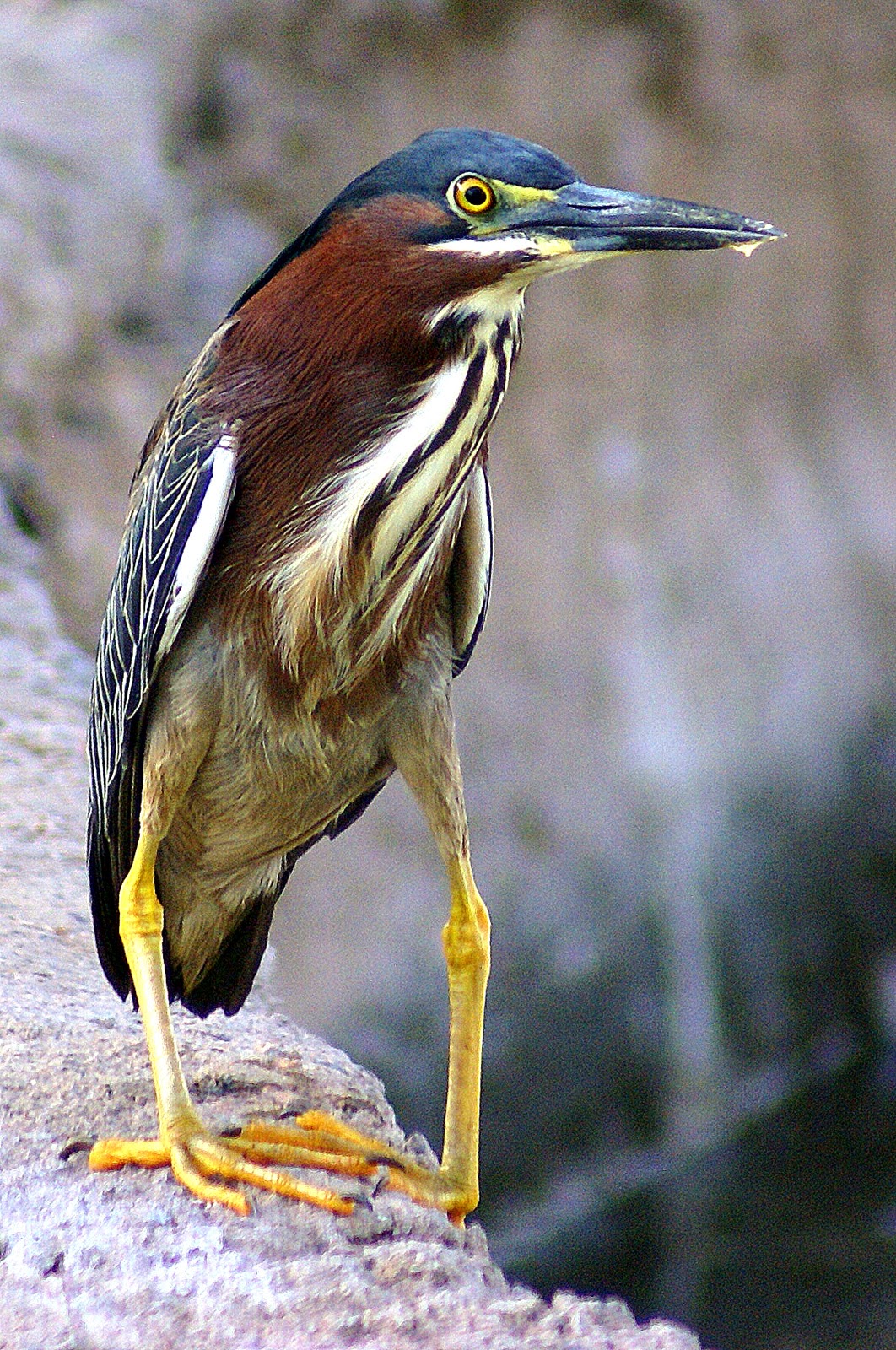More Favorite Waterbirds
One of the most familiar large birds is the Great Egret. They are often seen in ditches and wet areas along the side of the road. They are just over three feet tall and fish much like the Great Blue Heron.
Take a close look at this one. You might notice the green patch from the eyes to the bill. This is only seen during breeding season.

These two birds certainly look different enough to be separate species, or at least male and female. Actually, they are both Snowy Egrets during the breeding season. But, for some reason, the one on the right has a raised crest.
There are three ways to distinguish these from the Great Egret. The Snowy Egrets are much smaller, they have black bills, and the most amazingly bright yellow feet.

White Ibises are a common sight in South Florida, usually in flocks walking though the grass looking for insects.
They are easy to identify because of their long, down-turned bills. The young White Ibises are brown or splotchy.
When you take pictures of birds, it's always nice to find them with nice reflections as in this picture.

One of my very favorite birds is the Green Heron. They are much smaller that the other herons at only a foot and a half long, but that's misleading. Sometimes their neck is stretched out and a shaggy crest raised to make them appear larger when they are alarmed. Most of the time they are hunched down looked smaller than a chicken.
They are most likely to be found along small streams, ponds or marshes in areas with overhanging bushes and trees.
Check out the feet on this Green Heron. I took thirty or forty pictures of this bird and no, he really doesn't have one foot turned backwards in any of the other pictures. I guess he just has flexible ankles.

We were very lucky one day in the Everglades to see this baby Green Heron
Their color provides good camouflage making them hard to see most of the time.
It took us a little while to guess who he might be.
And four other common waterbirds.
 The Osprey is the bird who often wakes me in the morning, announcing that he has just caught a fish. Unlike the other birds described, the Osprey flies above the water and, when he spots a fish, dives down with his legs extended to reach down and catch the fish. Eagles fish in much the same way. The Osprey must be careful not to catch a fish that is too heavy or he won't be able to fly away with it.
The Osprey is the bird who often wakes me in the morning, announcing that he has just caught a fish. Unlike the other birds described, the Osprey flies above the water and, when he spots a fish, dives down with his legs extended to reach down and catch the fish. Eagles fish in much the same way. The Osprey must be careful not to catch a fish that is too heavy or he won't be able to fly away with it.They carry their fish to a branch, or a convenient dock piling where they tear off bites with their sharp bill.
The laughing gulls have been congregating on my dock in recent weeks. Their heads are mostly white now in January but we can see traces of the black that will be there in another month or two.
I'm not sure how they got the names "laughing." They certainly don't sound like they are laughing at anything. Their call, unlike other familiar gulls is more of a screeching sound.
I admit to having problems identifying most of the little shore birds like the sandpipers, but I don't have a problem with this graceful-looking bird. This is the Willet.
Sometimes they walk along the shore, but here he is getting his feet wet.











